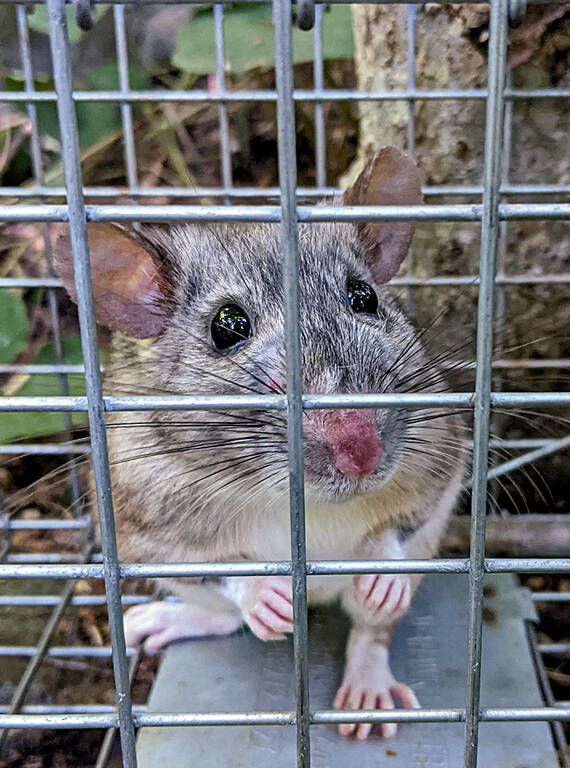Summer 2023
A Rodent Reappearance
The imperiled Allegheny woodrat has been rediscovered at Harpers Ferry.
On a muggy morning last June in the highlands of Harpers Ferry National Historical Park, Mack Frantz slowly approached a wire cage — and the beady-eyed, long-whiskered inhabitant within. Frantz slipped on a mask to avoid the risk, however small, of passing COVID-19 to a vulnerable species. Then, as his team looked on, the West Virginia Division of Natural Resources wildlife zoologist stooped, picked up the pint-sized creature and posed for a photo. And so it was that after 20 years without any documented park sightings, Harpers Ferry staff and state biologists had proof of the Allegheny woodrat’s continued presence.

Each Woodrat, an animal some of Mack Frantz’s colleagues have dubbed “a furry Slinky with teeth,” was weighed, measured, checked for parasites, tagged and poked for a blood sample before being released.
COURTESY OF K. BLACK, RADFORD UNIVERSITY“We needed to see if any populations were still hanging on,” Frantz said. “And, sure enough, we still have an actively breeding woodrat population.” The successful capture of not one, but five native pack rats — including a female and two juveniles — is good news for a species that has disappeared from at least 35% of its historic range, roughly New York to Alabama. Tipping the scales at less than 1 pound, this diminutive critter plays an outsize role in its woodsy environs. Not only does the woodrat serve as prey for owls, snakes, coyotes and more, but it also disperses spores and seeds. “It’s this really important part of the ecosystem that basically helps plant oak trees,” said Nicole Keefner, who was the biological science technician at Harpers Ferry at the time of the 2022 monitoring project.
Threats to this rodent’s persistence are many, from habitat loss and deforestation to disease, including raccoon roundworm. Add in the fact that spongy moths and chestnut blight have killed off the mast-producing trees that generate the bulk of the woodrat’s diet, and “it’s death by a thousand cuts,” Frantz said. These unfavorable odds coupled with Harpers Ferry’s exurban location make the woodrat rediscovery even more meaningful to Scott Bates, wildlife biologist for the Park Service’s National Capital Region. “It’s pretty nice that we have a rare species that can persist in the face of those kinds of threats,” he said.
About the author
-
 Katherine DeGroff Associate and Online Editor
Katherine DeGroff Associate and Online EditorKatherine is the associate editor of National Parks magazine. Before joining NPCA, Katherine monitored easements at land trusts in Virginia and New Mexico, encouraged bear-aware behavior at Grand Teton National Park, and served as a naturalist for a small environmental education organization in the heart of the Colorado Rockies.



